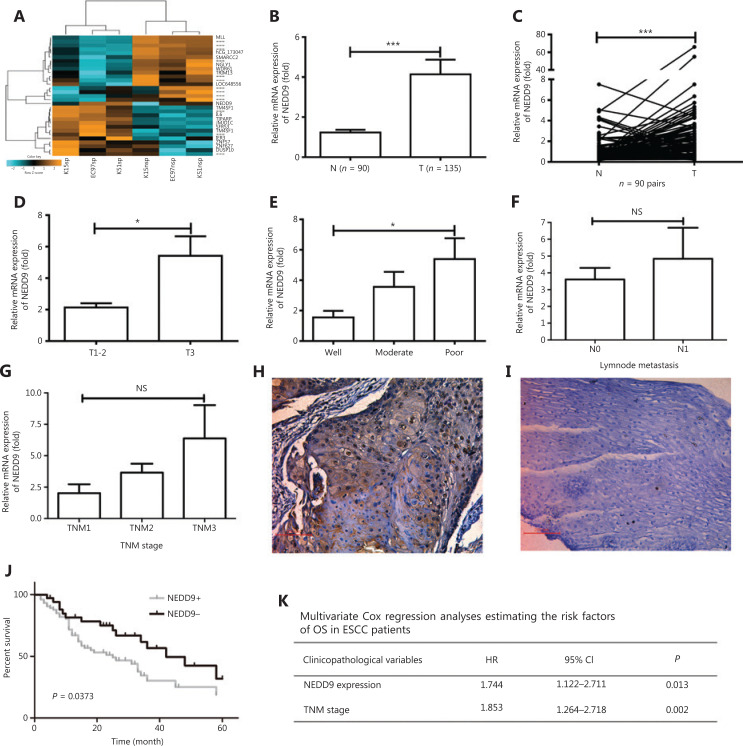Figure 1.
NEDD9 expression is higher in stem-like cells and plays a role in esophageal squamous cell carcinoma (ESCC) progression. (A) Microarray analysis was performed to identify changes in gene expressions in side population (SP) and non-side population (NSP) cells. (B) NEDD9 expression in neighboring non-cancerous tissues (N, n = 90) and ESCC tissues (T, n = 135) was determined by real-time PCR. (C) NEDD9 expression in 90 representative carcinoma tissues (T) and their corresponding non-cancerous tissues (N) from the same patients were analyzed for comparison. The correlation of NEDD9 expression with clinicopathological characteristics such as tumor invasion (T1-2: n = 58; T3: n = 77; D), differentiation (well: n = 45; moderate: n = 68; poor: n = 22; E), lymph node metastasis (N0: n = 98; N1: n = 37; F) and TNM stage (I: n = 10; II: N = 96; III: n = 29; G) were analyzed. Immunohistochemical staining of NEDD9 in primary ESCC samples (H) and their corresponding non-cancerous tissues (I). (J) Kaplan-Meier curves for overall survival rate of ESCC patients according to expression status of NEDD9 (NEDD9 high expression short as NEDD9+: n = 79; NEDD9 low expression short as NEDD9−: n = 56). (K) Multivariate analyses of overall survival using the Cox’s proportional hazard model. *P < 0.05; ***P < 0.001.

